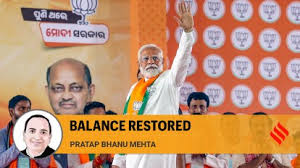18 April 2025 Indian Express Editorial
What to Read in Indian Express Editorial( Topic and Syllabus wise)
Editorial 1 : Pandemic Proofing
Context: A treaty to secure the world against Covid-like outbreaks
Introduction: In March 2021 over 20 countries and international organizations called for a global treaty to address future pandemics. WHO members established the Intergovernmental Negotiating Body (INB) to draft the treaty. Final draft of the treaty is to be presented at the World Health Assembly (WHA) in May 2025.
Key Negotiation Challenges
- Developed Countries prioritized instant access to scientific data for outbreak preparedness.
- Global South Nations demanded equitable allocation of vaccines, diagnostics, and therapeutics in exchange for data sharing, citing skewed vaccine distribution during COVID-19.
Key Provisions of the Draft Treaty
- One Health Approach
- Recognizes the interconnection between human, animal, and environmental health.
- This requires countries to identify risks of pathogen spillover (animal-to-human transmission) and implement measures to reduce such risks.
- Information Sharing and Benefits
- Pathogen data (samples, genetic sequences) must be shared swiftly.
- Benefit-sharing mechanism: Countries sharing data gain priority access to diagnostics, vaccines, and therapeutics developed using their contributions.
- Intellectual Property (IP) and Public Interest
- Prioritizes public-interest principles over IP rights during health emergencies.
- Aims to prevent situations like COVID-19, where vaccine manufacturers withheld information despite public-funded research.
- Enforcement and Compliance
- No binding enforcement mechanism included in the treaty.
- Relies on voluntary adherence by member states.
Challenges and Limitations
- Divergent Priorities of Developed and Low and Middle-Income Countries (LMIC).
- Tensions between data transparency (developed nations) and equitable resource allocation (Global South) remain unresolved.
- Lack of Enforcement
- Absence of penalties or mandates weakens compliance incentives.
- Risks replicating past failures (e.g. unenforced WHO International Health Regulations).
- U.S. Absence in Final Drafting
- The U.S. withdrew from negotiations, raising questions about global unity.
- Ratification by 191 countries nonetheless signals multilateral progress.
Significance and Implications
- Symbolic Victory for Multilateralism: Demonstrates WHO’s resilience despite U.S. withdrawal and geopolitical tensions.
- Framework for Future Preparedness: Establishes foundational principles for early detection, prevention, and equitable response.
- Equity vs. Compliance: While LMICs gain some leverage through benefit-sharing, the treaty’s effectiveness hinges on voluntary cooperation.
Conclusion: The WHO Pandemic Treaty represents a moderate but meaningful step toward global health security. While it falls short of binding commitments and fails to fully reconcile North-South divides, its emphasis on One Health, data sharing, and public-interest IP principles sets a precedent for future collaboration. Its success will depend on sustained political will and addressing enforcement gaps.
Editorial 2 : Balance is Restored
Context: SC action on TN governor is not overreach
Constitutional Challenge to Executive Inaction
- Case Examples
- Waqf (Amendment) Act 2025: Petitions filed immediately after gazette notification, reflecting urgency.
- Tamil Nadu Governor’s Inaction (2020–2025): Delay in addressing bills led to Supreme Court intervention only in 2025.
- Impact of Delayed Justice
- The bills lapse with assembly dissolution, undermining the elected government’s mandate.
- It threatens federalism if the Centre (via Governors) obstructs state legislative agendas.
Supreme Court’s Use of Article 142 for Complete Justice
- Judicial Breakthrough: Supreme Court invoked Article 142 to deem withheld bills as assented by the Governor.
- Critics allege of judicial overreach.
- Justification: Article 142 applies only where statutes/constitution are silent, not against existing provisions.
- Outcome: Tamil Nadu government notified the Acts swiftly, restoring legislative intent.
Implications for Federalism and Centre-State Relations
- Governor’s Role
- Governor is appointed by the Centre and his inaction risks becoming a tool for political obstruction.
- Example: Tamil Nadu Governor’s mala fide conduct highlighted by the Court.
- Constitutional Safeguards
- Articles 200 & 201: Do not permit a pocket veto (indefinite withholding of bills).
- Immunity Clause: Governors enjoy immunity for official acts, leaving elected governments helpless without judicial recourse.
Governor’s Accountability
- Finding of Mala Fides: Supreme Court criticized the Governor’s lack of bonafides and defiance of judicial directions.
- Remedies
- Political Accountability: Resignation demands were ignored by the Governor.
- Legal Accountability: Potential writ of quo warranto to challenge authority to hold office.
- Key Question: Can a Governor continue in office after judicial censure? This requires constitutional clarity.
Conclusion and Way Forward
- Constitution ensures democratic governance through binding, interlinked provisions.
- Supreme Court’s interpretation is final and critiques must align with rule of law or constitutional amendments.
- The ruling in The State of Tamil Nadu vs The Governor of Tamil Nadu reaffirms that constitutional principles cannot be subverted through inaction or mala fide conduct.


